It’s time to share incredible chameleon facts for kids including chameleon diet, habitat, reproduction, and its behavior. Chameleons belong to the family of Chamaeleonidae and are highly focused clade of lizards. With their unmistakable physical features, chameleons can be easily recognized such as their stereotypic eyes, lengthy personalized tongue, and zygodactylous feet.
One of the amazing chameleon facts for kids is that these reptiles are capable to change their color with respect to their surroundings. This helps them in camouflaging from potential predators. These animals inhabit all throughout South Asia, Africa, Spain, Portugal, California, and Florida.
Chameleons have been introduced in Sri Lanka and are mainly found in the moderate climatic ranges including rainforests and deserts. Although occasionally they are also kept as household pets.
Chameleon Facts For Kids
- The length of the chameleon measures at 15 mm (0.6 inches) in males however certain males are 68.5 cm (30 inches) long which makes them the smallest reptiles on the planet earth.
- Chameleon has a large crest on top of their heads.
- Male chameleons are believed to be much more adorned as compared to the females.
- The average lifespan of these reptiles is about 3 – 5 years.
- The oldest known chameleon was Anqingosaurus brevicephalus which lived some 58.7 to 61.7 million years ago.
- The chameleon’s feet are highly tailored to the arboreal locomotion. They can seize twigs and branches as their feet are so designed.
- They have the most unique types of eyes that operate independently from each other. The upper eyelid and lower ones are connected with a pinhole. Because of their distinctive functioning of eyes, chameleons can visualize two different things or objects at the same time.
- They are adept enough to see their prey at a good 5 to 10 meter distance.
- They do not have ears like snakes but that doesn’t mean they are deaf; they can identify sound frequencies within the range of about 200 – 600 Hz.
- Chameleons are able to see things even in Ultraviolet light.
- Chameleons possess the ability to move their eyes independently and they focus two images with two eyes.
- They primarily feed on leaves, twigs, flies, butterflies, and other flying and crawling insects.
- Chameleons change color to match the background which allow them to conceal against potential predators.
- They produce sounds that are completely inaudible to human ear.
Read More: Panther Chameleon Facts
- With the help of their lighting-fast tongues, chameleons successfully catch their prey at some distance.
- The chameleon’s tongue is almost 2 times the length of its body (not including tail). It’s also believed that smaller chameleons are can project their tongues at larger distances in comparison to the bigger chameleons.
- The tongue is made of collagenous elements. The speed of a tongue is 0.07 seconds consequently giving no time to their prey to escape.
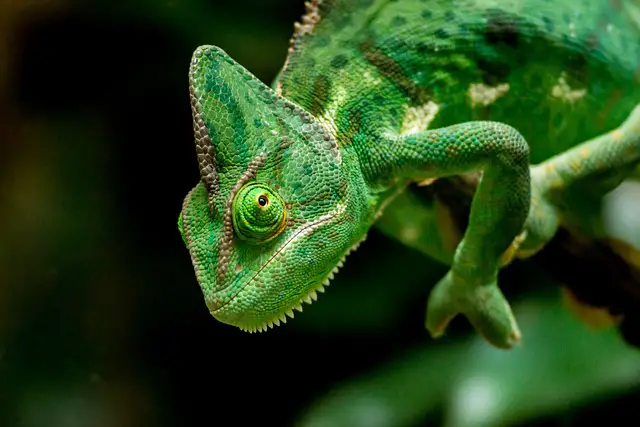 Reproduction
Reproduction
- The majority of these reptiles are considered to be oviparous while some are ovoviviparous. For the same reason they tend to lay eggs 3 to 6 weeks after copulation.
- The female chameleon is thought to come down to the ground and start digging a 10 – 30 cm (4 – 12 inches) hole, depending entirely on species.
- The clutch size differs as we move from one species to another. There may be 2 to 4 eggs in a clutch but larger veiled chameleons are believed to lay 80 – 100 eggs.
- The period hatching lasts for about 4 – 12 months, again depending upon the species. Some may take 2 years to hatch.
- The period of gestation lasts for 5 – 7 months.
- The young chameleons have gluey transparent membrane of its yolk sac.
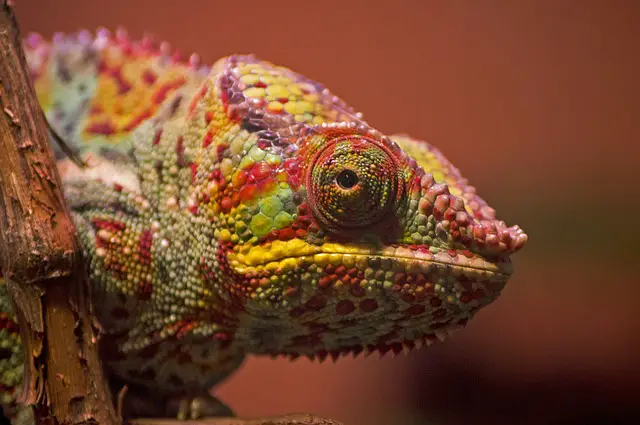 Change Skin Color
Change Skin Color
Chameleons are highly proficient to change their skin colors; the colors ranging from pink, black, green, brown, yellow, blue, purple, red, orange, black, and turquoise.
The major purpose of their color changing is not for camouflaging rather it meant for social signals. The secondary purpose is, however, to camouflage against potential predators.
Types | Chameleon Facts For Kids
- Jackson’s Chameleon (Trioceros Jacksonii)
- Panther Chameleon ( Furcifer pardalis)
- Veiled Chameleon (Chamaeleo calyptratus)
- Spectral Pygmy Chameleon (Rhampholeon spectrum)
- Pygmy Chameleon (Rhampholeon temporalis)
Chameleon Facts
Evolution and Systematics
While we do not have enough fossil records to trace back its history, it is nevertheless ascertained that chameleons date back to 60 million years ago.
Chameleons are thought to have emerged in Madagascar or Africa but the oldest recognized fossil (more than 26 million years ago), is Chamaeleo caroliquarti and it was originated in western Bohemia.
Chameleons are believed to have spread all over Bavaria, China, and western Bohemia where they are not found today. It is because of rapid climatic change, cooler temperature, and lower humidity that forced these animals to die off from these major habitats.
In the years gone by, chameleons have perfectly adapted into forms characterizing high wavy rows of scales called crest, along with throat (gular crest), and spiky on the back.
A good many number of species have settled on 1 – 6 bony horns comprising different sizes and shapes; some have flexible extensions of snout, others have unique coloration and patterns. Almost all chameleon species possess certain unique features.
Chameleons retain some features that separate them from lizards such as their projectile tongues with the help of which they capture prey, large protruding eyes, and their prehensile tail.
- Bradypodian: 27
- Brookesia: 24
- Calumma: 25
- Chamaeleo (Chamaeleo): 24
- Chamaeleo (Trioceros): 37
- Furcifer: 20
- Rhampholeon: 14
Scientists discovered many new species in 1997, most of which belongs to Madagascar. During this period many subspecies were upgraded to the status of species. The total number of species and subspecies counted as 180 in 2002, but this number is likely to change in the future.
Physical Characteristics
Chameleons are primarily known for their ability to change colors. Having said that many species can only assume limited colors; species belong to the genera Brookesia and Rhampholeon, takes up simply brown, black, and tan.
The young chameleons undertake the skin color that seems more cryptic thereby enables them to conceal properly against potential predators. Panther Chameleon, Furcifer pardalis is possibly the only species that shows most color variation.
Panther chameleon belongs to Madagascar. The color can be as varied as pink, blue, green, red, red-orange, aqua blue and green, white, turquoise and navy blue.
Contrary to popular belief, chameleons do not change color to match their background but they do so in response to certain psychological stimuli and to communicate.
Most chameleons do not have vocal chords but some do have the ability to vibrate and produce a ‘Squeaking’ or ‘Hissing’ sound. We humans cannot hear these sounds because they are made in an inaudible-frequency; but the interesting part is that chameleons themselves are also unable to hear these sounds as they lack external ear openings or eardrums.
A female chameleon adapts its color in order to show its willingness to mate. When it displays calm, subdued colors it means that female is interested in mating whereas dark intense color signals its counterpart to stay away.
Some species like Calumma boettgeri and C. nasuta, show purple blue spots known as “threat spots” on its head to prevent males. As for males, they compete with each other by displaying bright and intense colors just to attract a female. The one that shows the brightest coloration wins the contest and the failure often shows drab color to suggest that it gives up.
Those species that have variety in their coloration tends to change their throat, legs, and head too. The change of colors indicates different moods of chameleons on different occasions.
Generally, a vivid coloration suggests that the species is calm and quiet and is not seem to be interested in any sort of interaction.
The chameleons continuously shed with the passage of time because it outgrows new layer of skin.
It is not hard to distinguish between male and female chameleons for e.g. males have horns while females lack one. Unlike in the genera Brookesia and Rhampholeon, males are often larger than females. However, it is not easy to identify sex of juveniles until they reach the age of 6 months or perhaps when they first begin to show colors, horns, or even crests.
Chameleon’s Eyes
Chameleon’s eyes are one of its noticeable features because of large and protruding size. It is highly capable to move its eyes independently and is thus able to process two images at once. This unique ability always warns chameleons of potential predators. However chameleons have a poor hearing sense.
It examines the surrounding with the help of its eyes and attempts to execute a defense prior to enemy’s arrival. This explains why chameleons are very vivid animals and thus are not easy to be preyed on.
In order to measure the distance at which the prey stands, chameleons usually merge the two separate images and make it one—once measured, it throws its tongue to do the rest.
The chameleon’s tongue is composed of muscles, glands, nerves, cartilage, and tissue, and is used in the following way to capture prey:
How Chameleon’s Tongue Functions?
- The chameleon projects its tongue because of central cylindrical accelerator to capture prey.
- The tip of the tongue is called ‘tongue pad’ and it stands on top of the accelerator muscle, which is indeed joined with many pairs of muscles. Just when chameleon pushes its tongue towards the prey, it turns inside out and actively reverses to form a pouch immediately before actually making a contact with prey.
- The chameleon’s pouch consumes prey, and wet adhesion and interlocking uphold grip while the largest paired muscles create suction, pushes prey further into the pouch.
- The tongue retractors that are connected with the accelerator muscle brings the tongue back to its source on the hyoid bone, the prey is chewed and swallowed by the mouth.
Chameleon’s Structure
Chameleons are one of the few animals that have flexible skeletal structure. They are capable to inflate their lungs, compress their bodies to bask in sunlight, as well as enlarge their rib cage to bluff potential predators.
Chameleons have adapted five-toe-feet that indeed help them to have a firm grip on a trunk. Besides, their sharp claws further make the grip stable on surface that does not offer any resistance.
In the genera Bradypodion, Calumma, Chamaeleo, and Furcifer, tail length is almost equal in size to that of body length. Their prehensile tail serves as a fifth limb to anchor themselves while throwing tongue on a prey.
However, some chameleon species employ their tail to communicate; Parson’s Chameleon (C. parsonii parsonii). When they are asleep they roll their long tail to create a seemingly perfect coil. Few species such as the genera Rhampholeon and Brookesia possess fairly shorter tail but it is used to grasp hook.
Distribution
Chameleons are Old World species with Africa (including offshore islands) hosts the highest number of species embracing all 27 members of the genus Bradypodion; 59 forms in the genus Chamaeleo, 14 forms in the genus Rhampholeon, making up 99 species in total.
Madagascar offers 40% of the world’s chameleon species embracing all 27 forms in the genus Brookesia, 19 of the 21 members of genus Furcifer, 28 forms in the genus Calumma, totaling 73 species and subspecies.
The remaining eight species belongs to Yemen (one), Sri Lanka (one), Saudi Arabia (two), Comoro Islands (two), Seychelles (one).
Chamaeleo chamaeleon or common chameleon is the only species found in Europe, Greece, Middle East, southwestern Saudi Arabia, Yemen, and northern Africa. This suggests the distribution of chameleon on a wide range. Jackson’s chameleon (Chamaeleo jacksonii) is the first species to familiarized with the New World.
Habitat
Chameleon has a varied habitat because the species belong to the diverse family of reptiles. Chamaeleo namaquensis is the only species which is found in one of the most hostile places of earth, Namib Desert in Africa.
It has an exceptional ability to survive extreme temperatures at day and freezing temperature at night. It builds its habitat in the sparse vegetation of sand dunes.
Most of the species are however not adept to these extreme temperatures as they need high humidity. All these chameleons live in the rainforest or montane.
Sadly speaking, their habitat is threatened and they are less likely to survive in near future if the deforestation, modification, or climatic change continues in the same fashion. On the positive side, few chameleons have adapted to survive in degraded vegetation especially those dwelling in the underdeveloped countries.
Their primary habitats are prone to increasing grazing, agriculture, housing, and fuel. Some agriculture offer alternate habitats such as the coffee or fruit trees that are suitable for arboreal animals, but such crops as rice do not.
Some species fancy living in dense vegetation as they virtually occupy almost all the forests including semi-evergreen moist broadleaf forest, lowland evergreen broadleaf rainforest, deciduous or semi-deciduous broadleaf forest, cloud forest, thorn forest, upper and lower montane forest, disturbed natural forest, and finally native and exotic species plantations.
A few others survive in semidesert conditions, scrub, grassland, and they live in an elevation measuring up to 15,000 ft (4,500 m).
 Behavior
Behavior
Almost all chameleon species are diurnal as they emerge at dawn to bask in the sunlight. They are cold-blooded animals and they have to take sun bath in order to regulate their body temperature.
Once they reach the desired temperature, chameleons can easily seek prey or rain to quench thirst. They spend a considerable amount of time on catching prey but are also very watchful of any nearby threat.
Chameleons perceive all moving objects as a potential threat. If the object moves towards chameleons they will retreat and quickly conceal themselves behind perches called “squirreling”. Prominent among the predators are birds and snakes.
When at dusk chameleons seek a place to sleep and roost and they come back to the same place from where they awake. Certain species prefer to sleep at the end of branch.
They firmly grip the stem with their tail while draping bodies on large leaves. It is because of this firm grip they come to know any predator that moves on the branch, and when it happen they slide or drop to the ground to take refuge into the underbrush.
In so far as chameleon’s habitat is concerned it should be large enough to accommodate viable population of territorial and asocial reptiles.
With the arrival of mating season, males tend to compete with each other as they are intolerant of each other’s presence. Females on the other hand often avoid males when they are unreceptive.
Feeding Ecology & Diet
Chameleons have a varied diet as they rely on an array of crawling and flying insects, snails, larvae, moths, butterflies, and spiders. Large chameleons are able to consume vertebrates as well. In fact chameleons also prey on smaller chameleons including lizards, snakes, birds, and snakes.
Those living in captivity can also swallow young mice but it is not the natural diet. Apart from animals, chameleons also eat flowers, leaves, fruits, and other green vegetation. Veiled chameleons mainly feed on leaves and plants matter when there is not enough food.
They also eat crickets. According to a report chameleons are capable to eat 15 – 50 large crickets each day.
The common chameleons that belong to the North Africa, Near East, and Europe, primarily feed on arthropods, mantises, and wasps.
According to the conservationists, chameleons should not be fed with crickets only rather the diet must be supplemented with earthworms, flies, grasshoppers, waxworms, green leaves, oats, and fruits.
Organic matter includes moss, bark, soil, and twigs, but their nutritional worth is not known to scientists. Some species travel great distances in search of prey while others rely on their sit-and-wait method to trap prey.
They are believed to come together where insects appear only at certain times of the year such as on any eatable items. Chameleons go away when food items no longer presents.
Reproductive Biology
Chameleon shows different behavior on different occasions such as some species display bright colors while others involve in bobbing or jerking head movements as they begin to move towards a female.
Male’s behavior also varies as some advances very quickly while others are too slow with a jerky gait. The unreceptive females mostly run away but if they couldn’t they will face the male with gaping mouth or rearing up on the hind legs.
Females often attempt to grasp male’s forelegs and horns to put an end to this pursuit. However, when provoked to a large extent female can end up in a fatal bite that could lead to a male’s death.
Mostly chameleons are oviparous as they lay eggs in pits or in tunnels or even under leaves or rocks. The gestation period varies from species to species ranging from few weeks to several months.
Females dig tunnels with their front feet and then back into them to lay eggs. Once the female finishes laying eggs it hides the nest with soil. Sometimes they hide their eggs by spreading the twigs and leaves over it. After this, the mother leaves and the young chameleon are born independently.
Similarly incubation period can be as short as one month or as long as 18 months. Some species are Ovoviviparous (that they hatch eggs within mother’s body or immediately after being laid) and they escape straightaway after giving birth to young.
Conservation Status
IUCN listed three chameleon species Furcifer campani, F. labordi, and F. minor, as Vulnerable in 1996. This estimate is based on 20% population decline in the last 10 years. Brookesia perarmata is yet another species that is classified as Vulnerable because it occupies less than 39 sq. mi (100 sq km) in fewer than five locations.
All chameleon species in the genera Bradypodion, Chamaeleo, Calumma, and Furcifer, are likely to go extinct as they are listed on CITIES, Appendix II.
Four chameleon species were subjected to excessive commercial trading in 1995, as a result CITIES imposed moratorium on the imports of chameleons. This includes F. pardalis, F. lateralis, F. oustaleti, and F. verrucosus from Madagascar. The moratorium remained effective until 2002.
IUCN Red List also classified Brookesia perarmata as Vulnerable species but no other members of the genera Brookesia or Rhampholeon were protected as of commercial ban.
Some of the most common threats facing chameleons include fragmentation of acceptable habitat, modification, collection of commercial pet trade.
Chameleons will continue to decline and are most likely to go extinct if immediate measures are not taken to preserve their natural habitat. These species are not bred in captivity as they require large amount of natural space and varied temperature.
Significance to Humans
Chameleons are not often eaten as food even in remote areas in fact they do bear traditional importance as people generally kill or even burn chameleons to thwart evil spirits. Nonetheless, some cultures give refuge to these species because they believe that chameleons must be preserved.
Having said that, chameleons did hit the commercial trading in the late 1990s when Madagascar alone exports 260,000 species, while 345,000 chameleons were exported from Yemen and Africa.
These animals were then taken to the United States, Asia, and western Europe. In captivity, many chameleons undergo stress, injury, failure to meet the highly specialized nutritional requirements required for survival in a captive setting.
Resources
Books
Brady, L. D., and R. A. Griffiths. Status Assessment of Chameleons in Madagascar. Cambridge: International Union for the Conservation of Nature and Natural Resources, 1999.
Brygoo, E. R. Faune de Madagascar. Vol. 33, Reptiles Sauriens Chamaeleonidae: Genre Chamaeleo. Paris: ORSTOM et CNRS, 1971.
Glaw, F., and M. Vences. A Fieldguide to the Amphibians and Reptiles of Madagascar. 2nd ed. Cologne: M. Vences & F. Glaw, 1994.
Mellado, J., L. Gimenez, J. J. Gomez, et al. El Camaleón en Andalucía: Distribución actual y amenazas para su supervivencia. Rota: Fundacion Alcalde Zoilo Ruiz-Mateos, 2001.
Periodicals
Abate, Ardith. “Assessing the Health of Wild-Caught Chameleons.” Chameleon Information Network 31 (Spring 1999): 9–17.
———. “Reports from the Field: Parson’s Chameleon.” Chameleon Information Network 29 (Fall 1998): 17–25.
Deas, J. “In Search of the Veiled or Yemeni Chameleon, Chamaeleo calyptratus calyptratus.” Chameleon Information Network 43 (Spring 2002): 10–20.
Herrel, A., J. J. Meyers, P. Aerts, et al. “The Mechanics of Prey Prehension in Chameleons.” Journal of Experimental Biology 203 (2000): 3255–3263.
Chameleon Facts For Kids | Video

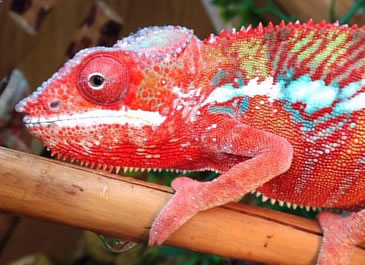
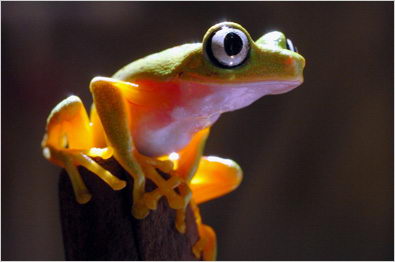


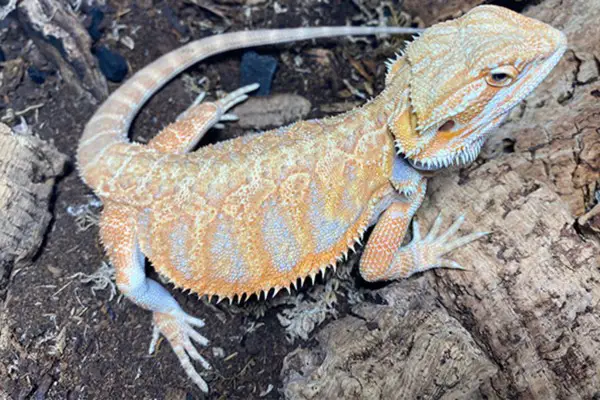



i love this animal :D